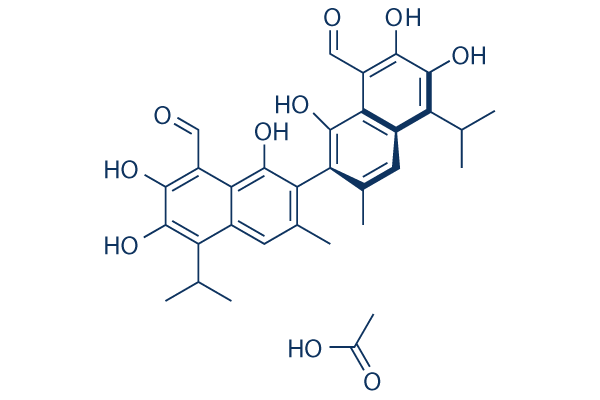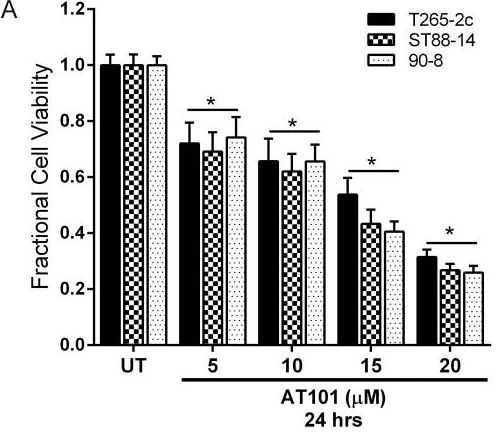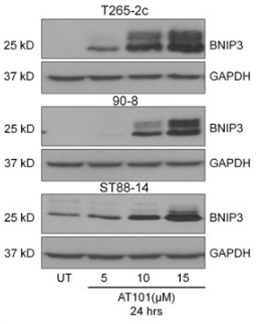
- Inhibitors
- By product type
- Natural Products
- Inducing Agents
- Peptides
- Antibiotics
- Antibody-drug Conjugates(ADC)
- PROTAC
- Hydrotropic Agents
- Dyes
- By Signaling Pathways
- PI3K/Akt/mTOR
- Epigenetics
- Methylation
- Immunology & Inflammation
- Protein Tyrosine Kinase
- Angiogenesis
- Apoptosis
- Autophagy
By research - Antibodies
- Compound Libraries
- Popular Compound Libraries
- Customize Library
- Clinical and FDA-approved Related
- Bioactive Compound Libraries
- Inhibitor Related
- Natural Product Related
- Metabolism Related
- Cell Death Related
- By Signaling Pathway
- By Disease
- Anti-infection and Antiviral Related
- Neuronal and Immunology Related
- Fragment and Covalent Related
- FDA-approved Drug Library
- FDA-approved & Passed Phase I Drug Library
- Preclinical/Clinical Compound Library
- Bioactive Compound Library-I
- Bioactive Compound Library-Ⅱ
- Kinase Inhibitor Library
- Express-Pick Library
- Natural Product Library
- Human Endogenous Metabolite Compound Library
- Alkaloid Compound LibraryNew
- Angiogenesis Related compound Library
- Anti-Aging Compound Library
- Anti-alzheimer Disease Compound Library
- Antibiotics compound Library
- Anti-cancer Compound Library
- Anti-cancer Compound Library-Ⅱ
- Anti-cancer Metabolism Compound Library
- Anti-Cardiovascular Disease Compound Library
- Anti-diabetic Compound Library
- Anti-infection Compound Library
- Antioxidant Compound Library
- Anti-parasitic Compound Library
- Antiviral Compound Library
- Apoptosis Compound Library
- Autophagy Compound Library
- Calcium Channel Blocker LibraryNew
- Cambridge Cancer Compound Library
- Carbohydrate Metabolism Compound LibraryNew
- Cell Cycle compound library
- CNS-Penetrant Compound Library
- Covalent Inhibitor Library
- Cytokine Inhibitor LibraryNew
- Cytoskeletal Signaling Pathway Compound Library
- DNA Damage/DNA Repair compound Library
- Drug-like Compound Library
- Endoplasmic Reticulum Stress Compound Library
- Epigenetics Compound Library
- Exosome Secretion Related Compound LibraryNew
- FDA-approved Anticancer Drug LibraryNew
- Ferroptosis Compound Library
- Flavonoid Compound Library
- Fragment Library
- Glutamine Metabolism Compound Library
- Glycolysis Compound Library
- GPCR Compound Library
- Gut Microbial Metabolite Library
- HIF-1 Signaling Pathway Compound Library
- Highly Selective Inhibitor Library
- Histone modification compound library
- HTS Library for Drug Discovery
- Human Hormone Related Compound LibraryNew
- Human Transcription Factor Compound LibraryNew
- Immunology/Inflammation Compound Library
- Inhibitor Library
- Ion Channel Ligand Library
- JAK/STAT compound library
- Lipid Metabolism Compound LibraryNew
- Macrocyclic Compound Library
- MAPK Inhibitor Library
- Medicine Food Homology Compound Library
- Metabolism Compound Library
- Methylation Compound Library
- Mouse Metabolite Compound LibraryNew
- Natural Organic Compound Library
- Neuronal Signaling Compound Library
- NF-κB Signaling Compound Library
- Nucleoside Analogue Library
- Obesity Compound Library
- Oxidative Stress Compound LibraryNew
- Plant Extract Library
- Phenotypic Screening Library
- PI3K/Akt Inhibitor Library
- Protease Inhibitor Library
- Protein-protein Interaction Inhibitor Library
- Pyroptosis Compound Library
- Small Molecule Immuno-Oncology Compound Library
- Mitochondria-Targeted Compound LibraryNew
- Stem Cell Differentiation Compound LibraryNew
- Stem Cell Signaling Compound Library
- Natural Phenol Compound LibraryNew
- Natural Terpenoid Compound LibraryNew
- TGF-beta/Smad compound library
- Traditional Chinese Medicine Library
- Tyrosine Kinase Inhibitor Library
- Ubiquitination Compound Library
-
Cherry Picking
You can personalize your library with chemicals from within Selleck's inventory. Build the right library for your research endeavors by choosing from compounds in all of our available libraries.
Please contact us at info@selleckchem.com to customize your library.
You could select:
- Bioreagents
- qPCR
- 2x SYBR Green qPCR Master Mix
- 2x SYBR Green qPCR Master Mix(Low ROX)
- 2x SYBR Green qPCR Master Mix(High ROX)
- Protein Assay
- Protein A/G Magnetic Beads for IP
- Anti-Flag magnetic beads
- Anti-Flag Affinity Gel
- Anti-Myc magnetic beads
- Anti-HA magnetic beads
- Poly DYKDDDDK Tag Peptide lyophilized powder
- Protease Inhibitor Cocktail
- Protease Inhibitor Cocktail (EDTA-Free, 100X in DMSO)
- Phosphatase Inhibitor Cocktail (2 Tubes, 100X)
- Cell Biology
- Cell Counting Kit-8 (CCK-8)
- Animal Experiment
- Mouse Direct PCR Kit (For Genotyping)
- Featured Products
- MRTX1133
- Nab-Paclitaxel
- KP-457
- IAG933
- RMC-6236 (Daraxonrasib)
- RMC-7977
- Zoldonrasib (RMC-9805)
- GsMTx4
- Navitoclax (ABT-263)
- TSA (Trichostatin A)
- Y-27632 Dihydrochloride
- SB431542
- SB202190
- MK-2206 Dihydrochloride
- LY294002
- Alisertib (MLN8237)
- XAV-939
- CHIR-99021 (Laduviglusib)
- Bafilomycin A1 (Baf-A1)
- Thiazovivin (TZV)
- CP-673451
- Verteporfin
- DAPT
- Galunisertib (LY2157299)
- MG132
- SBE-β-CD
- Tween 80
- Bavdegalutamide (ARV-110)
- Z-VAD-FMK
- Wnt-C59 (C59)
- IWR-1-endo
- (+)-JQ1
- 3-Deazaneplanocin A (DZNep) Hydrochloride
- RepSox (E-616452)
- Erastin
- Q-VD-Oph
- Puromycin Dihydrochloride
- Cycloheximide
- Telaglenastat (CB-839)
- A-83-01
- Ceralasertib (AZD6738)
- Liproxstatin-1
- Emricasan (IDN-6556)
- PMA (Phorbol 12-myristate 13-acetate)
- Dibutyryl cAMP (Bucladesine) sodium
- Nedisertib (M3814)
- PLX5622
- IKE (Imidazole Ketone Erastin)
- STM2457
- Saruparib (AZD5305)
- New Products
- Contact Us
research use only
(R)-(-)-Gossypol (AT-101) acetic acid Bcl-2 inhibitor
Cat.No.S2812

Chemical Structure
Molecular Weight: 578.61
Quality Control
Batch:
Purity:
99.81%
99.81
Chemical Information, Storage & Stability
| Molecular Weight | 578.61 | Formula | C30H30O8.C2H4O2 |
Storage (From the date of receipt) | |
|---|---|---|---|---|---|
| CAS No. | 866541-93-7 | Download SDF | Storage of Stock Solutions |
|
|
Solubility
|
In vitro |
DMSO
: 100 mg/mL
(172.82 mM)
Ethanol : 100 mg/mL Water : Insoluble |
Molarity Calculator
|
In vivo |
|||||
In vivo Formulation Calculator (Clear solution)
Step 1: Enter information below (Recommended: An additional animal making an allowance for loss during the experiment)
mg/kg
g
μL
Step 2: Enter the in vivo formulation (This is only the calculator, not formulation. Please contact us first if there is no in vivo formulation at the solubility Section.)
% DMSO
%
% Tween 80
% ddH2O
%DMSO
%
Calculation results:
Working concentration: mg/ml;
Method for preparing DMSO master liquid: mg drug pre-dissolved in μL DMSO ( Master liquid concentration mg/mL, Please contact us first if the concentration exceeds the DMSO solubility of the batch of drug. )
Method for preparing in vivo formulation: Take μL DMSO master liquid, next addμL PEG300, mix and clarify, next addμL Tween 80, mix and clarify, next add μL ddH2O, mix and clarify.
Method for preparing in vivo formulation: Take μL DMSO master liquid, next add μL Corn oil, mix and clarify.
Note: 1. Please make sure the liquid is clear before adding the next solvent.
2. Be sure to add the solvent(s) in order. You must ensure that the solution obtained, in the previous addition, is a clear solution before proceeding to add the next solvent. Physical methods such
as vortex, ultrasound or hot water bath can be used to aid dissolving.
Mechanism of Action
| Targets/IC50/Ki | |
|---|---|
| In vitro |
AT-101 inhibits a panel of different lymphoproliferative malignancies with IC50 ranged from 1.2 μM to 7.4 μM. AT-101 (10 μM) disrupts the Δψm in a concentration- and time-dependent manner in a diffuse large B-cell and in mantle cell lymphoma lines. AT-101 (1 μM or 2 μM) combined with carfilzomib (6 nM or 10 nM) induces apoptosis in HBL-2 and Granta cell lines. [2] AT-101 (20 μM for 24 hours) results in a median 72% apoptosis and down-regulation of Mcl-1 in CLL lymphocytes in both suspension culture as well as stromal coculture. Stromal cells express undetectable levels of antiapoptotic but high levels of activated ERK and AKT proteins and has low or no apoptosis with AT-101. [3] AT-101 induces apoptosis in a time- and dose-dependent fashion, with ED50 values of 1.9 mM and 2.4 mM in Jurkat T and U937 cells, respectively. AT-101 (10 μM) combined with radiation (32 Gy) induces more apoptosis than radiation alone and exceeds the sum of the effects caused by the single agent treatments. AT-101 activates SAPK/JNK in a dose- and time-dependent manner. [4] AT-101 (10 µM) induces apoptosis through activation of caspase-9, -3, and -7 in VCaP Cells. AT-101 (10 µM) decreases Bcl-2 and Mcl-1 expression in VCaP cells. [5] AT-101 (< 20 μM) is able to inhibit the growth of multiple myeloma cells despite the stimulatory growth effects provided by stromal cells in the bone marrow milieu. AT-101 (10 μM) induces apoptosis in multiple myeloma cells via the activation of caspases 3, caspases 9 and PARP. AT-101 (10 μM) promotes apoptosis in multiple myeloma cells by disrupting the Bax/Bcl-2 ratio and the mitochondrial membrane potential. [6]
|
| Kinase Assay |
Fluorescence-Polarization-Based Binding Assay
|
|
For competitive binding experiments, Bcl-2 protein (40 nM) and FAM-Bid peptide (2.5 nM) are preincubated in the assay buffer (100 mM potassium phosphate, pH 7.5; 100 μg/mL bovine gamma globulin; 0.02% sodium azide, 5 μL of a solution in DMSO of AT101 is added to the Bcl-2/FAM-Bid solution in Dynex 96-well, black, round-bottom plates to produce a final volume of 125 μL. For each experiment, a control containing Bcl-2 and Flu-Bid peptide (equivalent to 0% inhibition), and another control containing only FAM-Bid, are included on eachassay plate. After 4 hours incubation, the polarization values in milipolarization units (mP) weremeasured at an excitation
wavelength at 485 nm and an emission wavelength at 530 nm using the Ultra plate reader. IC50,the inhibitor concentration at which 50% of bound peptide is displaced, is determined from the plot using nonlinear leastsquares analysis and curve fitting performed using GraphPad Prizm 4 software. The unlabeled Bid BH3 peptide is used as the positive control. PF for Bcl-xL protein, Bak BH3 peptide labeled with 6-carboxyfluorescein succinimidyl ester (FAM-Bak) instead of the FAM-Bim to maximize the signal. It is determined that FAM-Bak has a Kd of 6 nM to Bcl-xL protein. The competitive binding assay for Bcl-xL is same as that for Bcl-2 with the following
exceptions. 30 nM of Bcl-xL protein and 2.5 nM of FAM-Bak peptide in the following assay buffer: 50 mM Tris-Bis, pH 7.4 and 0.01% bovine gamma globulin. PF for Mcl-1 protein, FAM-Bid peptide and human Mcl-1 protein are used. It is determined that FAM-Bid peptide binds to human Mcl-1 protein with a Kd of 1.71 nM. The competitive binding assays for Mcl-1 are performed in the same manner as that for Bcl-2 with the following exceptions. 5 nM Mcl-1 and 1 nM Flu-Bid peptide in the following assay buffer: 25 mM Tris, pH 8.0; 150 mM NaCl and 0.05% Pluronic acid
|
|
| In vivo |
AT-101 is still detectable in plasma with average concentrations of 0.49 μM for the 35 mg/kg group and 0.39 μM for the 200 mg/kg group in SCID beige mice bearing RL-DLBCL xenograft. AT-101 peak plasma concentration is observed after 30 minutes of administration of the drug in both the dose levels, with the 200 mg/kg group showing a plasma average concentration almost 4 times greater than the 35 mg/kg group (7.88 μM and 27.78 μM respectively) in SCID beige mice. AT-101 (25 mg/kg to 100 mg/kg, orally) indefinitely results in earlier onset of weight loss equivalent to more than 10% of the pretreatment weight and death in SCID beige mice. AT-101 (35 mg/kg, orally per day for 10 days) plus intraperitoneal cyclophosphamide (Cy) and intraperitoneal rituximab (R) show significantitumor volume control compared to any other treatment group. [2] AT-101 (15 mg/kg, p.o., 5 days/week) as a single agent in intact mice significantly reduces the development of VCaP tumor growth compared to untreated tumors at weeks 2 to 6. AT-101 in combination with surgical castration delays the onset of androgen-independent VCaP tumor growth compared to castration-only or AT-101-only groups in mice. [5]
|
References |
|
Applications
| Methods | Biomarkers | Images | PMID |
|---|---|---|---|
| Growth inhibition assay | Cell viability |

|
24824755 |
| Western blot | BNIP3 Smac / Cyt C p53 / Cox IV p-AKT / AKT APE1 / Bcl-2 / p53 / p-p53 / NF-κB |

|
24824755 |
Clinical Trial Information
(data from https://clinicaltrials.gov, updated on 2024-05-22)
| NCT Number | Recruitment | Conditions | Sponsor/Collaborators | Start Date | Phases |
|---|---|---|---|---|---|
| NCT05338931 | Recruiting | B-cell Non Hodgkin Lymphoma |
AbClon |
March 15 2022 | Phase 1|Phase 2 |
| NCT00934076 | Withdrawn | Carcinoma Non Small Cell Lung |
University of Alabama at Birmingham|Ascenta Therapeutics |
February 2010 | Phase 1 |
| NCT00561197 | Terminated | Locally Advanced Esophageal or GE Junction Cancer |
Ascenta Therapeutics |
August 2007 | Phase 1|Phase 2 |
Tech Support
Tel: +1-832-582-8158 Ext:3
If you have any other enquiries, please leave a message.
Frequently Asked Questions
Question 1:
Is it S2812 (-)-gossypol or another enantiomer?
Answer:
It is the R-(–)-gossypol acetic acid.






































